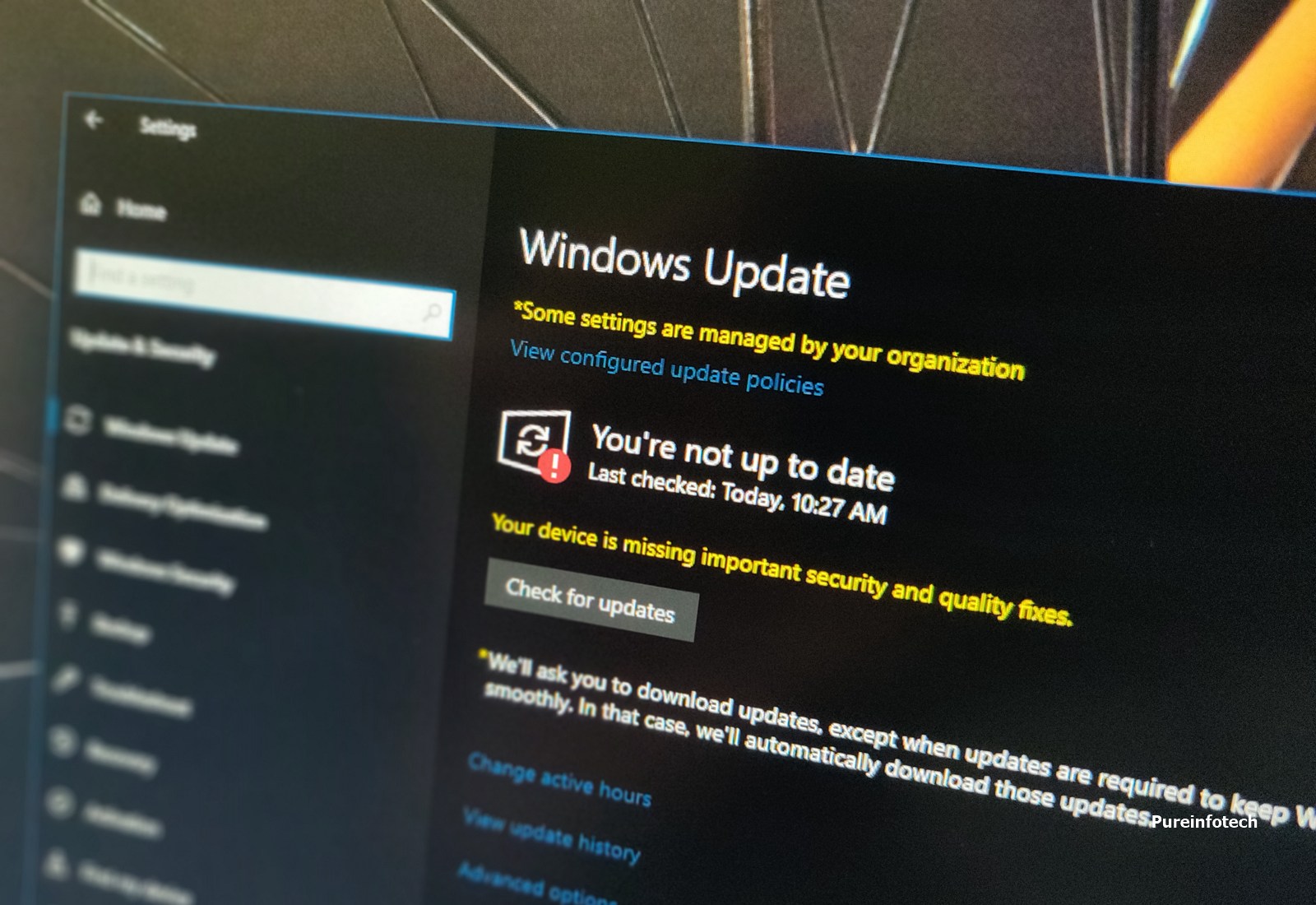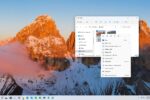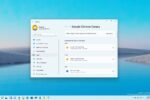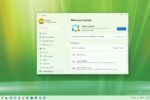- Microsoft pushes Windows 10 build 19044.1147 as the first official preview of version 21H2.
- The update brings a slew of fixes, but you won t find any new features.
- The company outlines the changes expected to arrive with the update.
- And confirms that Windows 10 21H2 will be a minor update delivered as a cumulative update.
- The same changes are also available for version 21H1 as build 19043.1147.
Microsoft is currently making Windows 10 build 19044.1147 (KB5004296) available through the Windows Insider Program’s Release Preview Channel. Only devices that were automatically transferred from the Beta Channel to the Release Preview Channel due to their incompatibility with Windows 11 can get this initial preview of the upcoming feature upgrade for Windows 10.
Build 19044.1147 includes a number of fixes for File Explorer, network, and storage, but it doesn’t bring any major changes. In addition, the KB5004296 update resolves a memory leak and further disables Timeline.
Version 21H1 can also receive the same update, KB5004296, which contains the identical modifications. The upgrade, which is accessible via the Release Preview Channel, will raise the version number to 19043.1147 in this flight. You won’t get this update if your device was in the Beta Channel before being automatically switched to the Release Preview Channel. Additionally, the next cumulative update for Windows 10 21H1 is anticipated to provide these improvements to users.
The following are all the modifications in the most recent flight of version 21H2, per the company’s announcement:
- Fixed a problem with searchindexer. After you sign out, searchindexerd continues to hold handles to the per-user search database in the profile path, C:\Users\username\AppData\Roaming\Microsoft\Search\Data\Applications\\ . As a result, searchindexer stops working and duplicate profile names are created.
- Addressed a problem that prevents gaming services from opening certain games for desktop users.
- Fixed a problem that prevents you from entering text using the Input Method Editor (IME). This might occur, for example, after startup if you have set the power options to shut down a laptop by closing its lid.
- We changed the functionality for uploading new activity into Timeline. If you sync your activity history across your devices using your Microsoft account (MSA), you cannot upload new activity into the Timeline. You can still use Timeline and see your activity history (information about recent apps, websites, and files) on your local device. This does not affect Azure Active Directory (AAD) accounts. To view web history, Microsoft Edge and other browsers provide the option to view recent web activities. You can also view recently used files using Microsoft OneDrive and Microsoft Office.
- Addressed a problem that might cause the File Explorer window to lose focus when you are mapping a network drive.
- Fixed a problem that causes File Explorer to stop working after reaching 99% completion when you are deleting many files on a mapped network drive.
- We fixed a timing issue in the Group Policy Registry Telemetry that causes Group Policy extension processing to fail.
- Addressed a problem that repeatedly rebuilds the Windows Filtering Platform (WFP) filters. This issue occurs when a device is enrolled in a mobile device management (MDM) service and MDMWinsOverGP is set.
- Fixed a problem with an MDM service that fails to correctly apply certain junk mail rules.
- Addressed a problem that always reports the update build revision (UBR) as zero (0) on a device during enrollment to an MDM service.
- Fixed a problem that causes the enrollment of the Elliptic Curve Digital Signature Algorithm (ECDSA) certificate to fail with the error, 0x80090027 NTE_INVALID_PARAMETER. This issue occurs when the Trusted Platform Module (TPM) provider (the Microsoft Software Key Storage Provider) stores the key.
- Addressed a problem with auditing events 4624 and 5142 that display the wrong event template when Dutch is the display language.
- Fixed a problem that causes System Integrity to leak memory.
- Addressed a problem that plays the sound for selecting something in a game loudly when you press the trigger button on a game controller.
- Fixed a problem that prevents power plans and Game Mode from working as expected. This results in lower frame rates and reduced performance while gaming.
- Addressed a problem in which Network Internal Access appears on the taskbar network icon on systems that access the internet from certain domains.
- Fixed a problem in which the Network Connectivity Status Indicator (NCSI) fails to detect internet connectivity after you connect to a virtual private network (VPN).
- Addressed a problem that causes printing to stop or prints the wrong output. This issue occurs when you print using a USB connection after updating to Windows 10, version 2004 or later.
- We fixed a rare issue that might degrade performance in applications that call Gdiplus.dll!GdipMeasureString in a tight loop with a new font on each call. This issue occurs after installing Windows updates released on and after February 2021.
- Fixed a problem that incorrectly routes some audio channels when streaming using certain fixed channel layouts.
- Addressed a problem that always displays devices that RemoteFX USB redirects as Remote Desktop Generic USB Device instead of the actual device name.
- Fixed a problem in which Set-RDSessionCollectionConfiguration does not set the camerastoredirect:s:value custom property.
- We fixed a Local Security Authority Subsystem Service (LSASS) domain controller memory leak that is reported in Privileged Access Management (PAM) deployments.
- Addressed a problem that prevents you from accessing a network drive that maps to a Distributed File System (DFS) root after you sign out.
- Fixed a problem that prevents you from reconnecting to mapped network drives after you sign in and displays an access denied error. This issue occurs if you use the net use /deep option to create multiple drive mappings to different paths on the same encrypted file share.
- Addressed a problem that prevents access to files on a Server Message Block (SMB) share when you enable Access Enabled Enumeration (ABE).
- Fixed a problem that prevents the Windows Server service from starting if SrvComment is greater than 128 characters.
- Addressed a problem in the Windows Network File System (NFS) client that might prevent you from renaming a file after mounting an NFS share. This issue occurs if you rename the file using File Explorer but does not occur if you rename the file using the command line.
- Fixed a problem with an unhandled Open File dialog critical exception. As a result, Microsoft Foundation Class (MFC) applications might close unexpectedly.
- Addressed a problem in which the Storage Sense page in Settings might incorrectly report the size of some storage devices that use the GUID Partition Table (GPT). The affected devices will incorrectly report in Storage Sense that the size is twice as large as the size reported in File Explorer. Note: This issue does not affect storage devices that use a master boot record (MBR).
In addition to these enhancements, the business has revealed that version 21H2 will be a minor update that is released cumulatively and has a scoped set of features centered on security and productivity, ranked in order of importance to satisfy client requests based on feedback. Some of these features will include:
- Adding WPA3 H2E standards support to wireless security.
- Windows Hello for Business supports simplified passwordless deployment models.
- GPU compute support in the Windows Subsystem for Linux (WSL) and Azure IoT Edge for Linux on Windows (EFLOW) deployments for machine learning and other workflows.
Nevertheless, the most recent Windows 10 preview still does not incorporate these modifications.
Download Windows 10 19044.1147
The preview for 19044.1147 is available right now via the Dev Channel and will install itself. Nevertheless, you may always obtain it manually by using the Check for updates button under Settings>Update & security>Windows Update.



